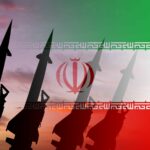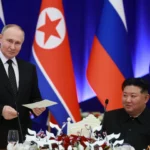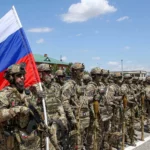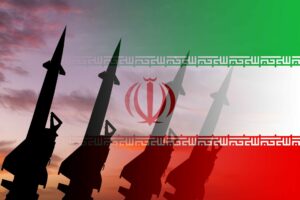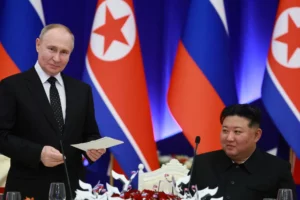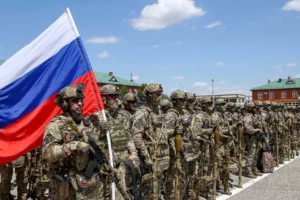The New Development Bank, a financial institution created by the BRICS bloc of emerging markets, doesn’t have any immediate plans for the group to create a common currency, its vice president and chief financial officer said.
While the members of BRICS – Brazil, Russia, India, China and South Africa – are pushing to conduct more trade between each other in local currencies, they aren’t ready to challenge the global dominance of the dollar, Leslie Maasdorp said in an interview on Wednesday with Bloomberg TV’s Haslinda Amin.
“The development of anything alternative is more a medium to long term ambition,” he said. “There is no suggestion right now to create a BRICS currency.”
The bloc, which was formed in 2009, has been striving to gain more clout globally as a way of counterbalancing the dominance the US and its traditional allies have in multilateral financial institutions such as the World Bank and the International Monetary Fund.
Still, even the Chinese Renminbi “is a very long way from becoming a reserve currency,” Maasdorp said.
A key part of BRICS’ strategy is the Shanghai-based New Development Bank, which has $50 billion in subscribed capital and plans to add several new emerging market member countries this year in a bid to expand its lending capability, according to Maasdorp.
Already, in addition to the core BRICS countries, the bank includes Bangladesh and the United Arab Emirates among its members. Uruguay is in the process of joining, and Saudi Arabia has applied to.
“The intention has always been to create a global bank anchored in emerging markets,” Maasdorp said.
Maasdorp also said that the bank aims to direct 40% of lending to climate-related projects.
Not on the table
In response to a written parliamentary Q&A this past week, Finance Minister Enoch Godongwana said there had been no direct discussions on a new currency, but reiterated the move towards further cooperation with BRICS countries to make non-dollar trades.
One of the driving factors behind talk of creating a new currency is to become less dependent on the dollar.
The value of the American currency has grown amidst interest rate hikes and geopolitical conflict, which has, in turn, hurt many emerging economies.
This has led to calls to use alternatives to the greenback as the global trading currency, with China, the world’s second-largest economy, supporting the idea of introducing a new currency.
A new currency would also lessen the impact of sanctions, especially after the West imposed sanctions on Russia following its invasion of Ukraine in early 2022.
The BRICS members are looking to “ensure that we do not become victims to sanctions that have secondary effects on countries that have no involvement in issues that have led to those unilateral sanctions,” Naledi Pandor, South Africa’s minister of international relations, previously said.
Pandor added that proposals are being considered by the Shangai-based and BRICS-created New Development Bank on how the new currency would work.
However, Godongwana said there has been no direct request from BRICS to focus on de-dollarisation.
Other areas of co-operation
That being said, the minister said that there had been discussions and agreements in the BRICS Payments Task Force to look at several other areas.
For instance, a feasibility study on the implementation of the following elements of the G20 Crossborder Payments Roadmap:
- Building Block 1: The development of common cross-border payments vision and targets.
- Building Block 10: Improving access to payment systems by banks, non-banks and payment infrastructures – broadening the range of eligible candidates for settlement accounts by changing access policies, technical standards and supervisory or oversight regimes; and
- Building Block 14: Adopt a harmonised version of ISO 20022 for message formats (including rules for conversion/mapping) – promoting the adoption of common message formats, such as a harmonised version of ISO 20022 and common rules of mapping/converting data between different data formats.
In addition, the minister said there is greater information sharing between BRICS members on lessons learned from sandboxes, such as how they can inform regulatory frameworks.
BRICS members will also share on experiences on central bank digital currencies (CBDCs).
Additionally, the BRICS member counties said that they would consider bilateral interlinking payment infrastructures for settlement in their own currencies.
Godongwana said that the South African government has been approached by Russia and India to introduce interlinking payment infrastructure, with preliminary discussions between the South African Reserve Bank and the two foreign central banks already taking place.
He said that the meeting with the Russian central bank looked at the interlinking of both real instant payment systems and settlement systems, whilst the engagements with the Reserve Bank of India premised on settlement systems interlinking, using their respective currencies.
However, the SARB said that the interlinking discussions with Russia and India will be put on hold whilst it focuses on its several domestic and regional payments initiatives, including its Real Time Gross Settlement System (RTGS) Renewal, the Association of African Central Banks (AACB) and the Southern African Development Community (SADC) initiatives.
He added that progress and development will also be driven by the market’s desire to settle in alternative currencies.
Source : Business Tech

